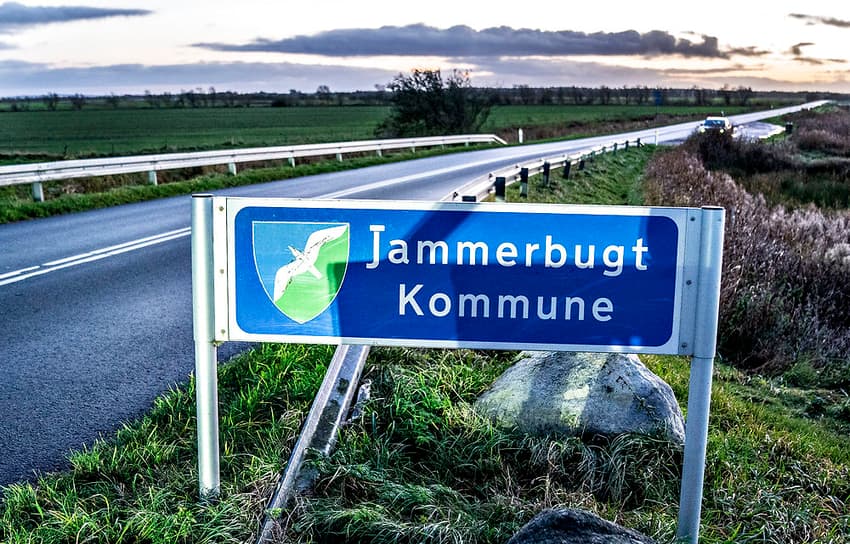Denmark to restrict North Jutland borders due to mink coronavirus outbreak

Authorities in Denmark are to ask residents in North Jutland not to leave their home municipalities due to concerns over the spread of a mutated form of coronavirus.
Seven municipalities with confirmed coronavirus cases in mink are to be encompassed by restrictions asking residents to remain within municipal limits as far as possible.
The municipalities affected by the order are Hjørring, Frederikshavn, Vesthimmerland, Brønderslev, Jammerbugt, Thisted and Læsø.
“We have to stop movement of residents across municipal borders. We need to find a model for this,” Per Bach Laursen, the mayor in the Vesthimmerland municipality, told Politiken.
Restaurants, sports and cultural activities are to be closed for the next four weeks, Laursen also told the newspaper.
Regional broadcaster TVMidtvest reports that there is unlikely to be any physical control of municipal borders, but that the government is still working to finalise measures. That is also based on comments from Laursen, the mayor in Vesthimmerland.
The intervention comes after the national government on Wednesday announced it would cull the entire population of minks at farms in Denmark.
The decision to cull up to 17 million animals was deemed unavoidable after a mutated version of the new coronavirus was detected at mink farms and then spread to people.
The mutation "could pose a risk that future (coronavirus) vaccines won't work the way they should," Prime Minister Mette Frederiksen told a press conference, adding: "It is necessary to cull all the minks."
Laursen told broadcaster DR that people in the affected North Jutland municipalities should stay within the borders of the municipality in which they live and get a coronavirus test.
Anyone who tests positive for coronavirus in the affected municipalities will also be required to test for whether they have been infected with the normal strain or the variation from mink farms.
Schools and child care facilities will remain open, but adult education will be limited, according to the Danish media reports.
The restrictions will come into effect from tomorrow for an initial four weeks.
Twelve people were registered as infected with a mutated form of the coronavirus, news wire Ritzau reported on Wednesday, but the real number is likely to be far higher. Newspaper Information reported on Thursday that up to four or five percent of infections in North Jutland may be with the specific mink mutation of coronavirus that is concerning authorities.
READ ALSO: Denmark to cull millions of minks over mutated coronavirus
Comments
See Also
Seven municipalities with confirmed coronavirus cases in mink are to be encompassed by restrictions asking residents to remain within municipal limits as far as possible.
The municipalities affected by the order are Hjørring, Frederikshavn, Vesthimmerland, Brønderslev, Jammerbugt, Thisted and Læsø.
“We have to stop movement of residents across municipal borders. We need to find a model for this,” Per Bach Laursen, the mayor in the Vesthimmerland municipality, told Politiken.
Restaurants, sports and cultural activities are to be closed for the next four weeks, Laursen also told the newspaper.
Regional broadcaster TVMidtvest reports that there is unlikely to be any physical control of municipal borders, but that the government is still working to finalise measures. That is also based on comments from Laursen, the mayor in Vesthimmerland.
The intervention comes after the national government on Wednesday announced it would cull the entire population of minks at farms in Denmark.
The decision to cull up to 17 million animals was deemed unavoidable after a mutated version of the new coronavirus was detected at mink farms and then spread to people.
The mutation "could pose a risk that future (coronavirus) vaccines won't work the way they should," Prime Minister Mette Frederiksen told a press conference, adding: "It is necessary to cull all the minks."
Laursen told broadcaster DR that people in the affected North Jutland municipalities should stay within the borders of the municipality in which they live and get a coronavirus test.
Anyone who tests positive for coronavirus in the affected municipalities will also be required to test for whether they have been infected with the normal strain or the variation from mink farms.
Schools and child care facilities will remain open, but adult education will be limited, according to the Danish media reports.
The restrictions will come into effect from tomorrow for an initial four weeks.
Twelve people were registered as infected with a mutated form of the coronavirus, news wire Ritzau reported on Wednesday, but the real number is likely to be far higher. Newspaper Information reported on Thursday that up to four or five percent of infections in North Jutland may be with the specific mink mutation of coronavirus that is concerning authorities.
READ ALSO: Denmark to cull millions of minks over mutated coronavirus
Join the conversation in our comments section below. Share your own views and experience and if you have a question or suggestion for our journalists then email us at [email protected].
Please keep comments civil, constructive and on topic – and make sure to read our terms of use before getting involved.
Please log in here to leave a comment.